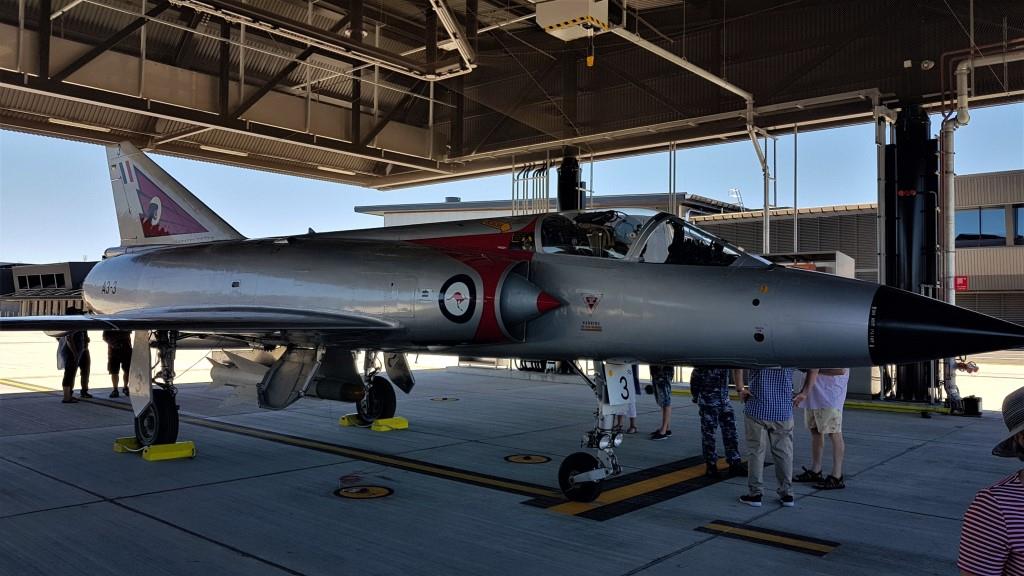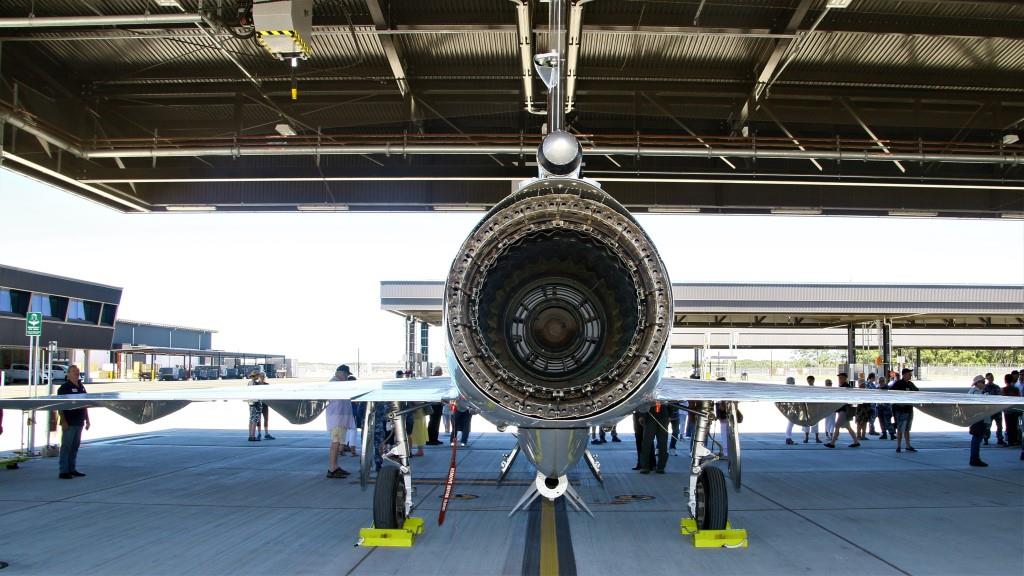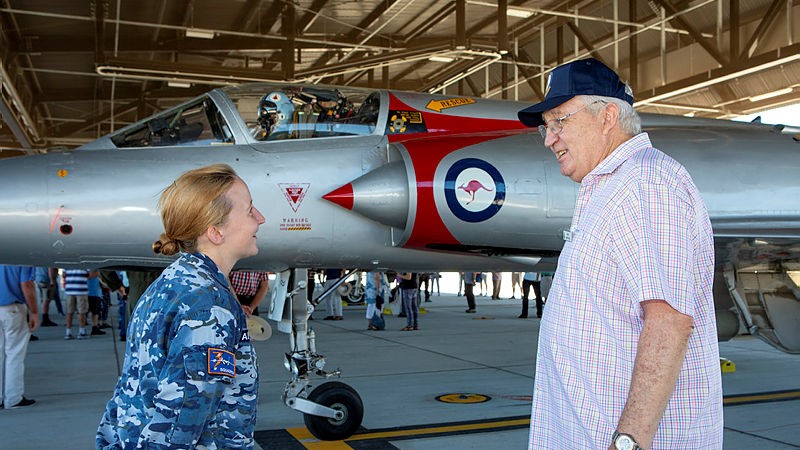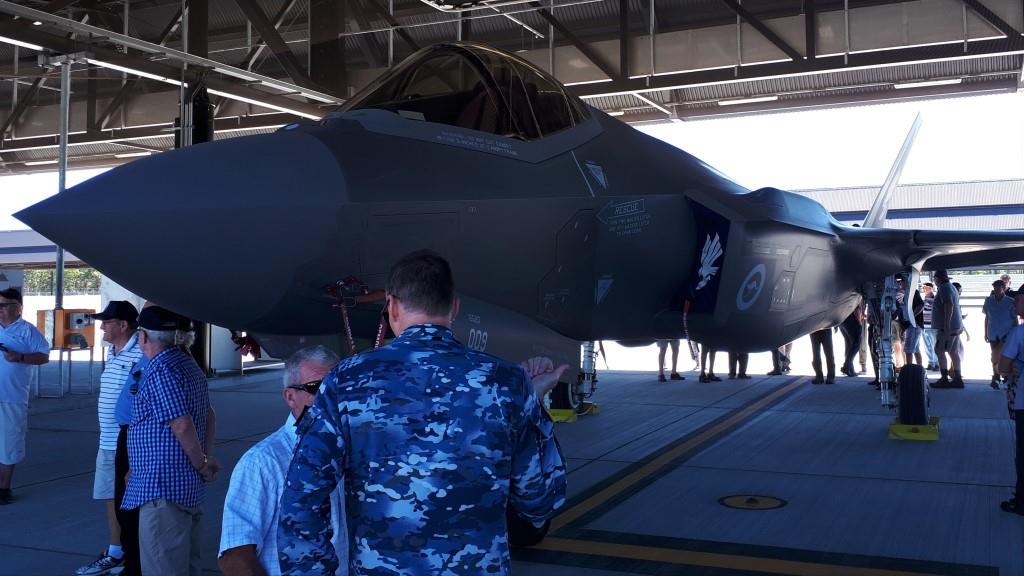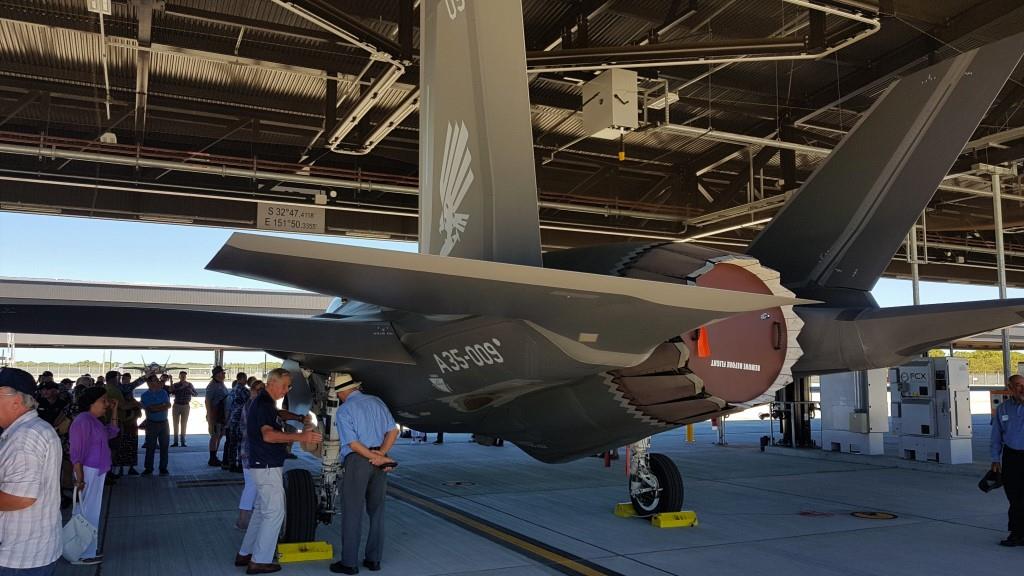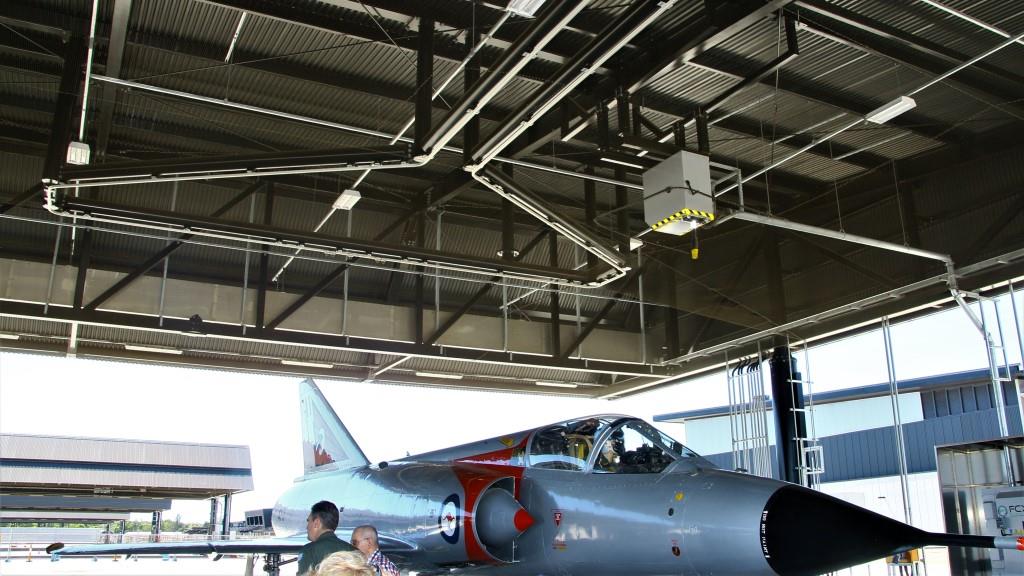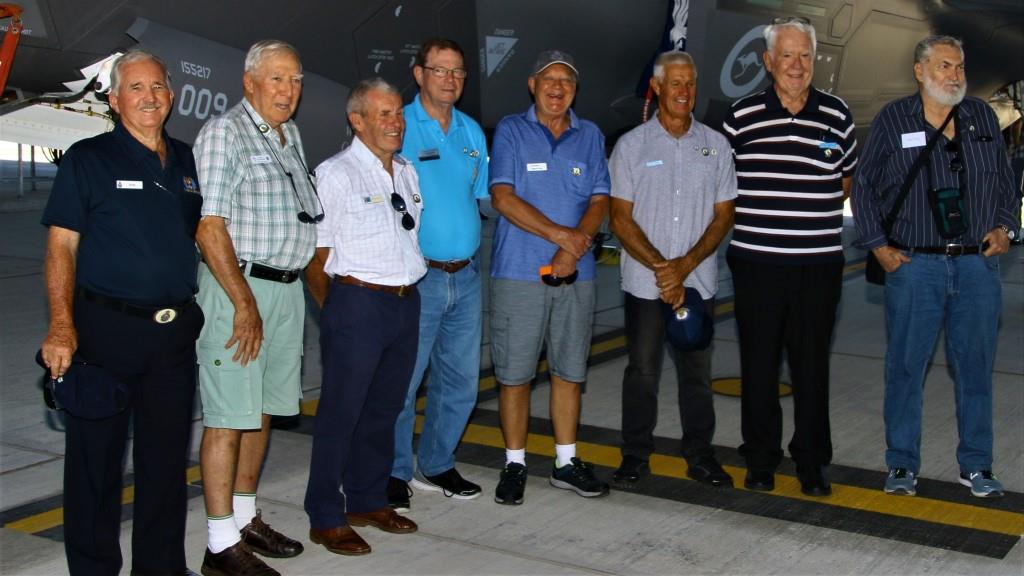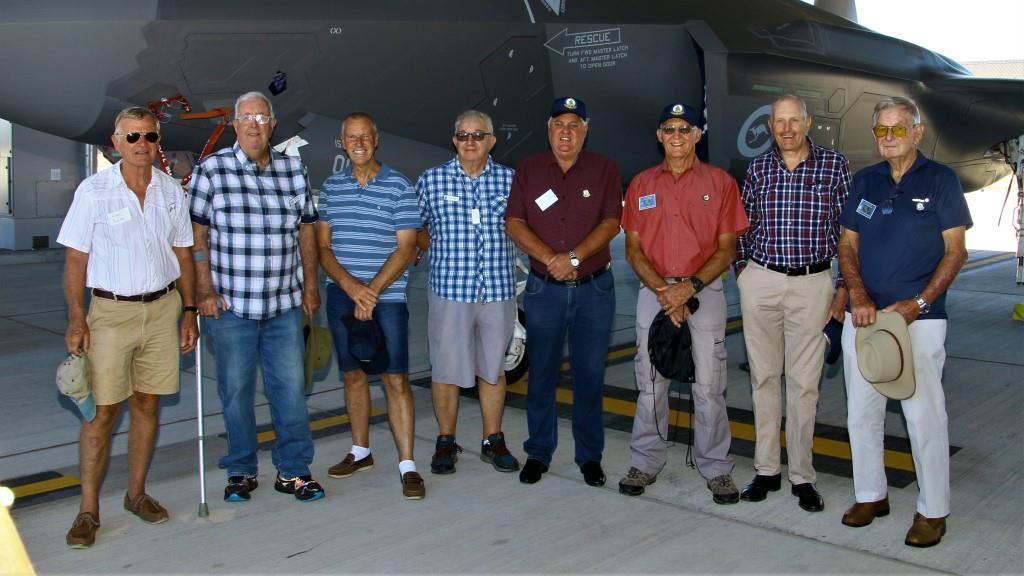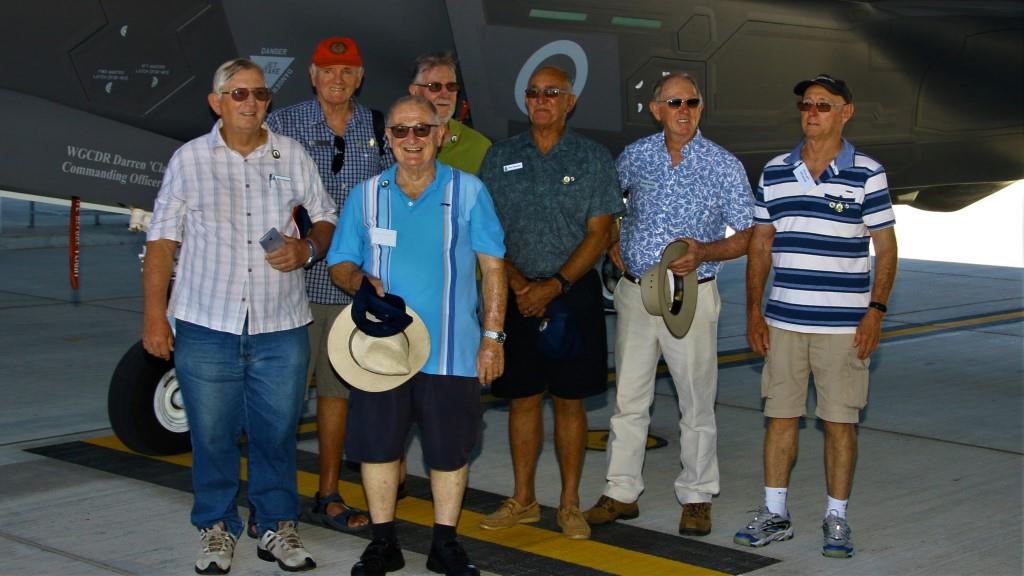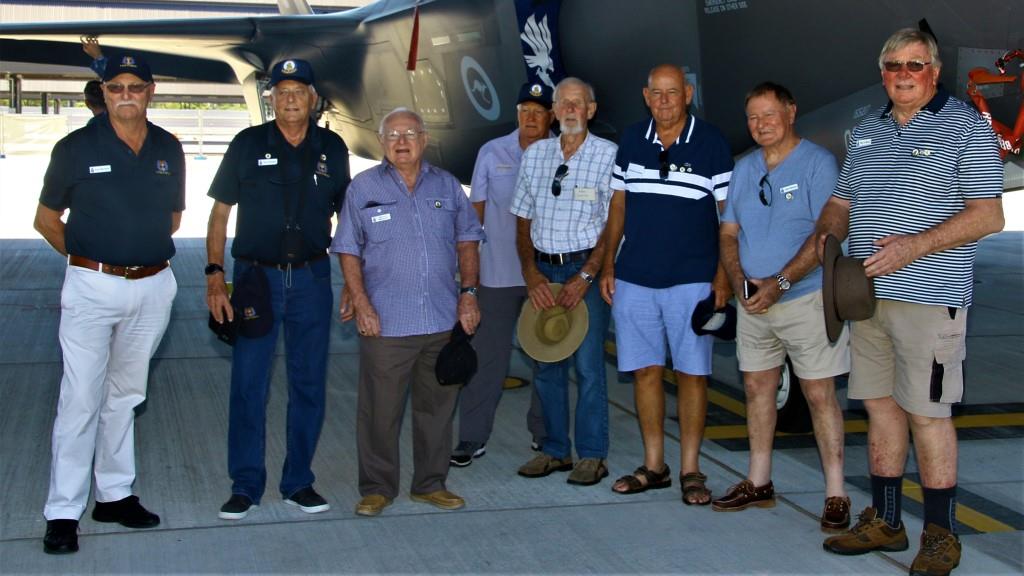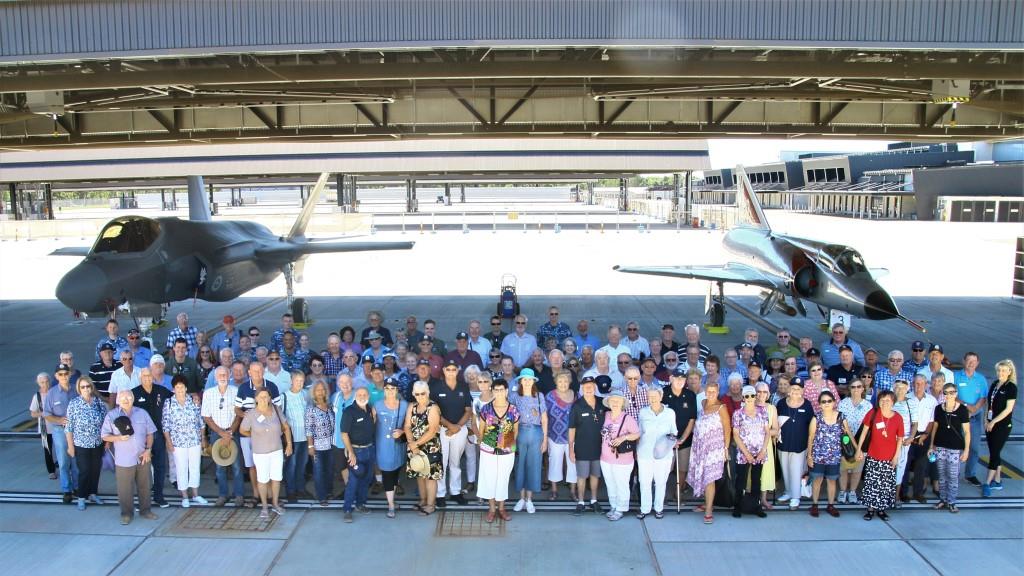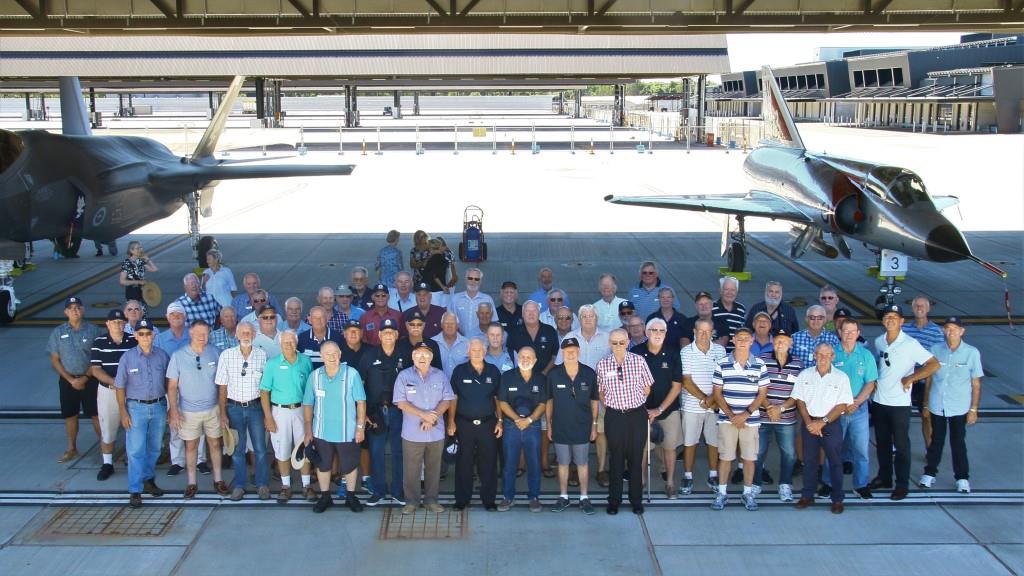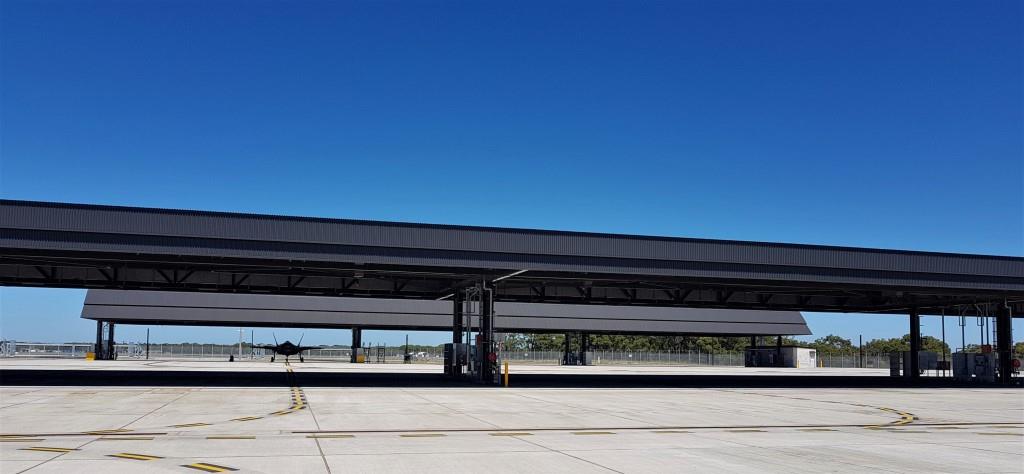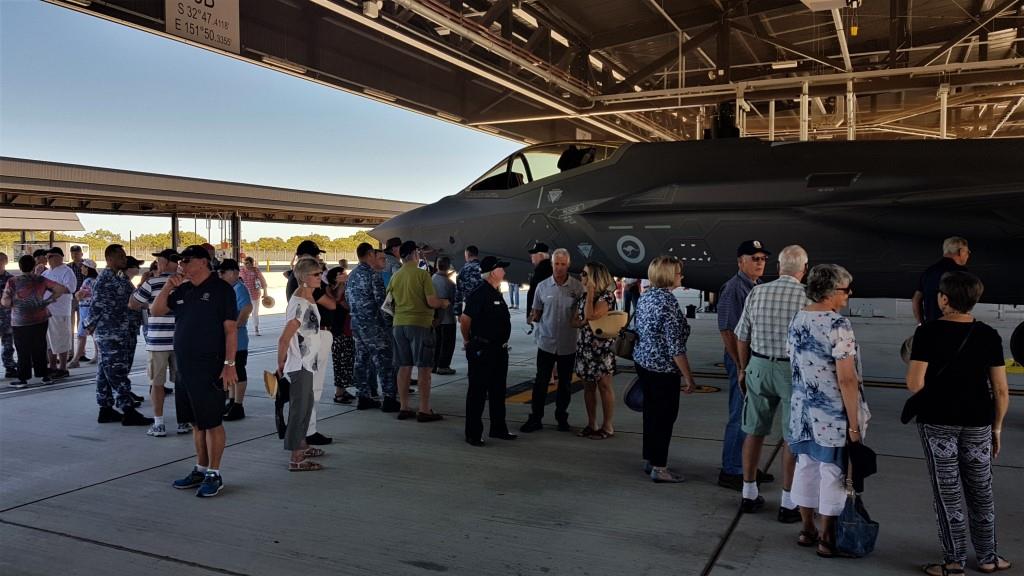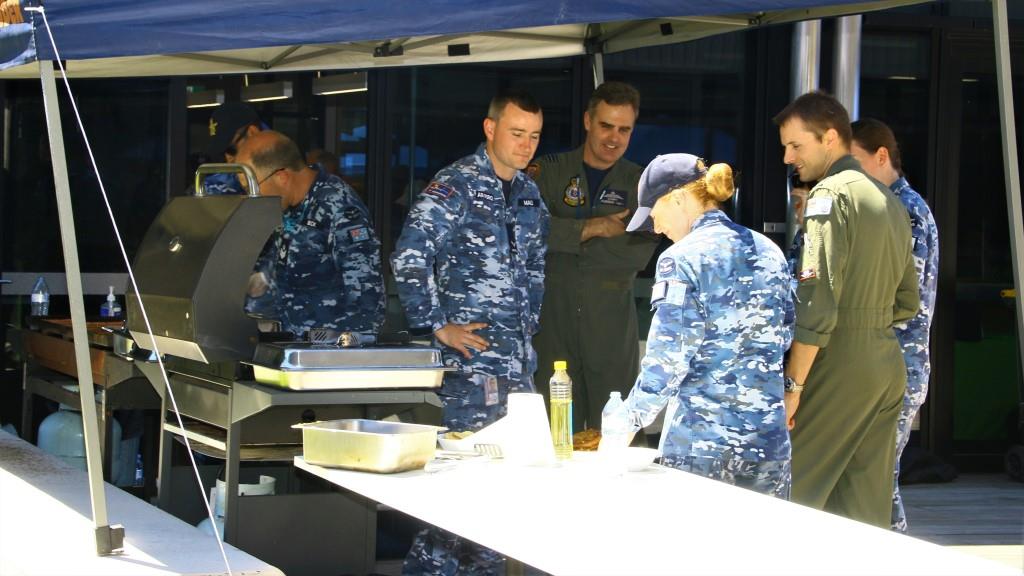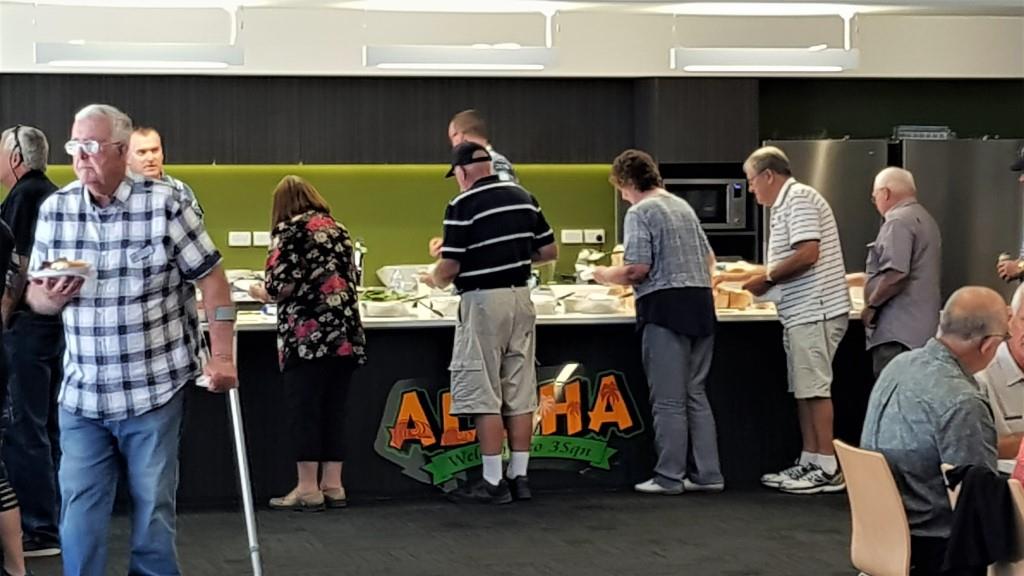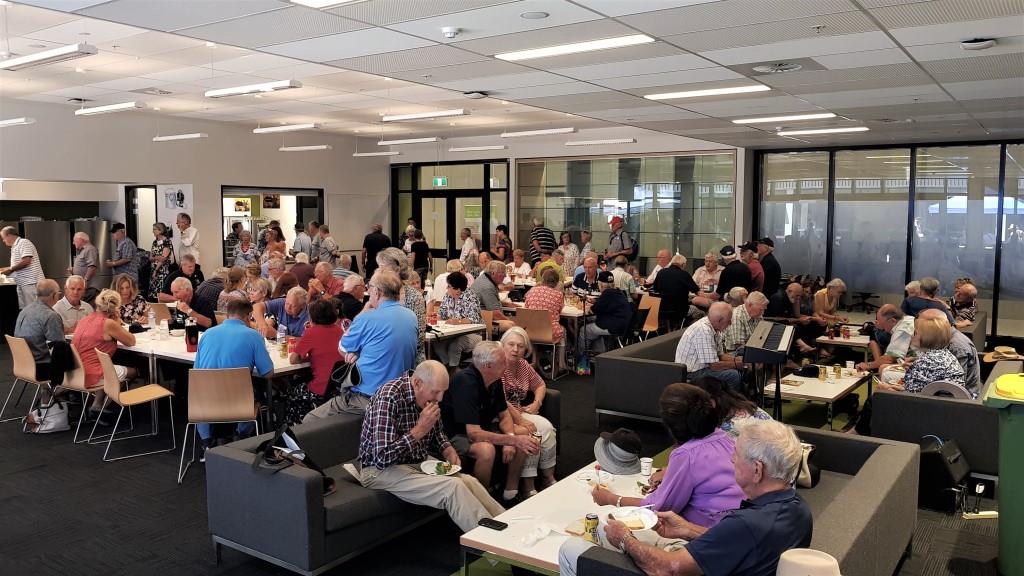|
|
|||||||||||||||
|
|||||||||||||||
|
Privacy Policy | Editorial Policy | Profit Policy | Join the Association | List of Members | Contact us | Index | Links |
|||||||||||||||
|
Back Go to page: 1 2 3 4 5 6 7 8 9 10 11 12 13 14 15 16 17 18 19 20 Forward
|
|||||||||||||||
|
|
|||||||||||||||
|
|
|||||||||||||||
|
The photos on this page have been crunched to allow the page to open quicker. You can click each pic to get the HD version which you can download.
|
|||||||||||||||
|
3 Squadron Lizards.
On the Sunday, 17th February, everyone assembled at the Mercure Hotel at about 9.45am, this time dressed in civvies, waiting for the 10.00am Banana-bus and the short trip out to the Base. A couple of RAAF bods checked names as we entered the bus as sadly we live in different times, security at ADF establishments has been beefed up considerably over the past few years and non-service people need a damn good excuse to get onto a base these days. Williamtown was, at the time, at threat level, (called SAFEBASE), Charlie.
|
|||||||||||||||
|
Assembling at the hotel.
|
|||||||||||||||
|
SAFEBASE is the Protective Security Alert System used by Defence to match security measures with assessed threat levels. There are five levels which are applied to Defence bases, they are:
|
|||||||||||||||
|
|||||||||||||||
|
|
|||||||||||||||
|
The SAFEBASE level and the corresponding security measures applied may vary between Defence sites. The current SAFEBASE alert levels are sign-posted at the entry to Defence buildings and establishments. Each SAFEBASE alert level has specific responses and procedures that are unique to each site.
But Charlie, specific threat likely? Bases have been on Charlie for yonks – you’d have to wonder why. They must know something we don’t.
|
|||||||||||||||
|
Queuing at the bus – getting your name ticked off and allowed on.
|
|||||||||||||||
|
This time the bus dropped us off at the new 3 Squadron buildings – and you couldn’t call them hangars, they were far grander than that, it was like moving to an annex of the Mercure Hotel, it made you feel like wiping your boots before you went inside. Today’s Air Force is certainly a far cry from our days, facilities and working conditions are so much better, but for me, I think the biggest change is the Air Force has finally realised that its airmen (and airwomen) are actually people, people with ideas, people who can be relied on and who have the welfare of the RAAF top of mind, people who should be listened to.
Today’s Air Force is more like a giant commercial enterprise, like a giant commercial airline, the emphasis these days is the job, to keep those extraordinarily sophisticated aircraft flying, discipline, although still there is now more on the back burner, the whole organisation functions on people knowing what has to be done, on when to do it and how to do it without being cajoled. It seems the Air Force actually cares for its airmen and its airwomen – you constantly see Officers talking with the airmen, not talking at them. The old class conscious Air Force might have worked when propellers drove the Air Force and everything was typed on an IBM golf ball, but today it’s different. Today’s Air Force personnel are all highly trained specialists, all proud of their work. Clerks are now called Personnel Capability Specialists who work with complicated and sophisticated electronic equipment, todays aircraft are just one huge computer housed in a metal skin pushed through the air by an extraordinarily complicated engine and the people who work on them are all highly trained. For everything to work, people have to work together, they have to know and like what they are doing, not be ordered to do it. Everyone relies on everyone else.
The young people I spoke with loved their job, loved the Air Force, they all looked happy and all were fit – and good luck to them all.
|
|||||||||||||||
|
After we got off the bus, we were shown the way to the Squadron’s no-smoking “smoko room” and although we didn’t see one example of a game of 500, what we did see was fabulous. The smoko-room was like the foyer of the Mercure, long gone are the segregated rooms with stainless steel urns, dirty coffee mugs and chocka-block ash-trays, instead smoko rooms these days are for all ranks with top class amenities, ample tables and chairs at which to sit and eat, lounge chairs on which to relax and even carpet on the floor.
Wonderful.
And it’s not just 3 Squadron with its incredible aircraft that enjoy these facilities, a week or so before, we were at Amberley and had a look over the new facilities for 35 Squadron – and they were the same. Looks like it’s the norm.
Social clubs still exist though and 3 Sqn had a number of items on sale in one corner of the room as well as offering tea and/or coffee and goffers of all varieties.
|
|||||||||||||||
|
|
|||||||||||||||
|
Barry Bradley with his new 3 Sqn patch – purchased from the Social Club.
|
|||||||||||||||
|
While we waited to be taken out onto the tarmac to check out the new arrivals, everyone enjoyed a good snack selection which was placed on each table. Current 3 Squadron people, dressed in the new blue “camouflaged” working gear fussed around and made everyone feel more than welcome, some wanting to talk about the Mirage which 3 Squadron retired (1986) before most were even born.
During its twenty five years of RAAF service the Dassault Mirage 111O was known as the French Lady. This was a very apt description. She was certainly good looking with all the right curves in the right places and moved with a certain dignity and poise. The French Lady, however, also shared some less celebrated traits with her Gaelic counterparts, being occasionally unpredictable or illogical, sometimes moody, often spiteful and always expensive to maintain. But, in her more intimate moments, she left no doubt as to her ability or usefulness. Despite her faults she was admired by all who met her.
She came into service in December 1963. The fleet was built to a total of 100 Single seat 111Os and 16 dual seat 111Ds. Over the next twenty four years 43 aircraft were lost and 14 pilots were killed. Despite these rather sombre figures, the French Lady was very popular with her pilots, with many achieving over 2000 hours on type, and seven more than 3000 hours. The aircraft, in a clean configuration, had a sparkling performance despite a relatively modest thrust/weight ratio, with an exhilarating acceleration and rate of climb in full afterburner. Very few aircraft could match its amazing roll rate. All this, coupled with the best feeling flight controls of any contemporary aircraft, made it a sheer delight to fly
Several RAAF fighter aircraft types established themselves as worthy of their own special niche in RAAF history. The Mirage 111O is one of those select few. Despite never being used in combat, in its long service as our frontline fighter the Mirage served the RAAF very well. It was a pilot's aircraft and a superb example of the aerodynamicist's art.
It must be remembered, however, that the Mirage was designed as a medium to high level interceptor to counter the nuclear bomber threat in the European theatre. The Matra missile was the primary weapon backed up by a 30mm gun pack. In this configuration the aircraft performed very well
However, when Australian operations required the addition of two supersonic external fuel tanks and two Sidewinder missiles, plus the Matra, a lack of available power was apparent. As a result, the RAAF Mirage 111O was underpowered in the configuration required for our conditions. This would have been a definite handicap if offensive air interceptions had been required.
The situation was exacerbated by the fact that the aircraft could not be air re-fuelled. With the Mirage, the tanks are refuelled individually using mechanical valves. The system worked well for a short range interceptor and no thought was given to the single point refuelling needed for inflight refuelling. This significantly handicapped the aircraft's capability and radius of action as external tanks were required for all longer range operations.
Chosen to replace the F-86 Sabre, the Dassault 111O Mirage was selected ahead of the Lockheed F104 Starfighter. Both were designed for the pure interceptor role and later adapted for limited air to ground attack work. The selection was controversial. Many considered the F104 would have been a better choice, not least of all because it was an American aircraft and the RAAF had a long history of successful cooperation with the USAF in aircraft production.
It is certainly true that coping with a French design resulted in many shortcomings for the Mirage programme. Also, French influence prevented the Mirage from being employed in Vietnam and as a result two generations of RAAF fighter pilots never saw a shot fired in anger. However, in view of the appalling F104 loss rate in Vietnam, perhaps these same fighter pilots have reason to be grateful that they had a beautiful aircraft to fly if not to fight with.
It was then time to head out to the tarmac.
|
|||||||||||||||
|
John Broughton and TB
|
|||||||||||||||
|
We must compliment WGCDR Darren Clare here, his Squadron had gone to a lot of trouble to make the weekend a memorial one for the blokes who took the Squadron to Butterworth 50 years ago. Somehow, they had begged, borrow or stolen a Mirage and placed it next to the F-35 for blokes to drool over.
|
|||||||||||||||
|
Phil Witts with his Mirage.
|
|||||||||||||||
|
|
|||||||||||||||
|
Stretch Robinson and Dave Bowden.
|
|||||||||||||||
|
Sometimes getting out of bed just ruins the whole day.
|
|||||||||||||||
|
Still a magnificent looking aircraft – after all these years.
|
|||||||||||||||
|
The angry end of the Mirage.
|
|||||||||||||||
|
It’s ok if you disagree with me, I can’t force you to be right.
|
|||||||||||||||
|
|
|||||||||||||||
|
Current 3 Sqn member, Megan Bridger gets the info on the Mirage from “Joe” Vogelzang.
|
|||||||||||||||
|
Peter Chapelow (partly hidden) getting the good oil on the magnificent F-35.
|
|||||||||||||||
|
Click the pic below to see a short video on the F-35
|
|||||||||||||||
|
|
|||||||||||||||
|
The F-35 looks the business from any angle.
|
|||||||||||||||
|
The aircraft are parked in “car ports” which have been built out on the tarmac area. No longer do blokes and blokettes have to work in the blazing sun or in the rain. Interesting to note the T shape frame in the roof area is the mount for safety harnesses. People working on the airframe are now harnessed (WH&S) so if they fall off they don’t hit the ground and that box in the roof with the yellow and black safety tape, contains the ground power, no need to wheel out a power cart, just press a button on the panel and the cable drops down, you just plug it in and bingo.
|
|||||||||||||||
|
Radio blokes
|
|||||||||||||||
|
Instruments
|
|||||||||||||||
|
Gunnies
|
|||||||||||||||
|
Sumpies
|
|||||||||||||||
|
Everyone lined up for a pic in front of the two aircraft.
|
|||||||||||||||
|
Some of the blokes who took the Mirage to Butterworth.
|
|||||||||||||||
|
|
|||||||||||||||
|
|
|||||||||||||||
|
3 Squadron has only 2 aircraft at Williamtown at the moment, but there’s room for plenty more.
|
|||||||||||||||
|
After an hour or so with the aircraft, it was time to head back inside to enjoy a barbecue lunch.
|
|||||||||||||||
|
During labour the pain is so great that a woman can almost imagine what man feels like when he has a cold
|
|||||||||||||||
|
While the “oldies” had been out on the tarmac, 3 Squadron blokes and blokettes, along with the boss, had been busy tossing snags.
|
|||||||||||||||
|
The snags, with salads of all descriptions, were laid out and as they had done many years ago, everyone formed a line and filed past.
|
|||||||||||||||
|
The oldies, enjoying their lunch, in the all-ranks smoko room.
After lunch, it was back onto the bus and back to the Mercure. What a wonderful weekend, old friendships were rekindled, phone numbers and email addresses were swapped, and promises made to meet again at the Mirage reunion in June this year.
A huge thank you must go to WGCDR Darren Clare and the people from 3 Sqn for allowing the weekend to go ahead, it was appreciated by everyone.
|
|||||||||||||||
|
|
|||||||||||||||
|
|
|||||||||||||||
|
|
|||||||||||||||
|
|

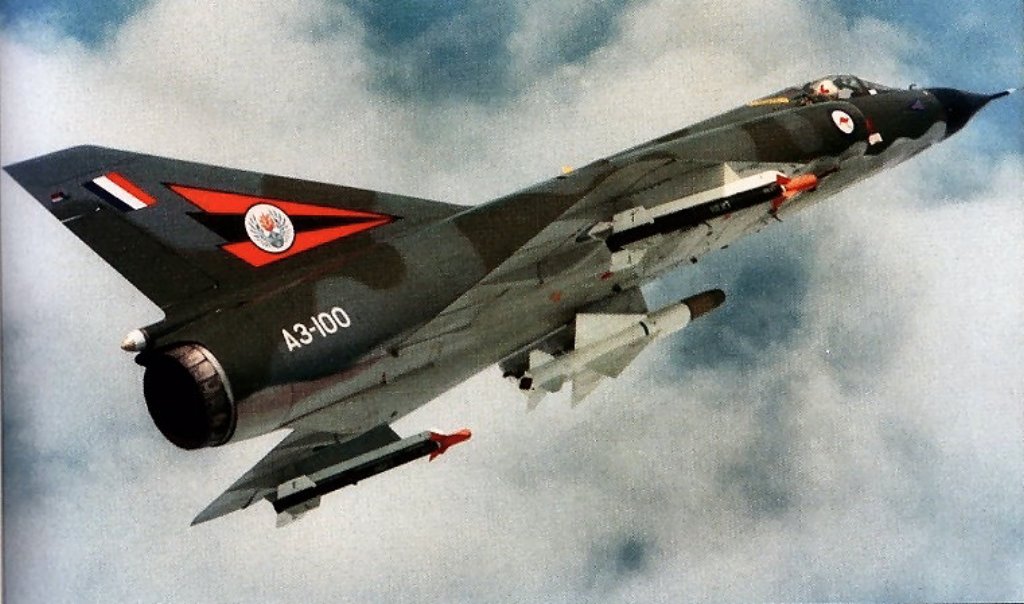
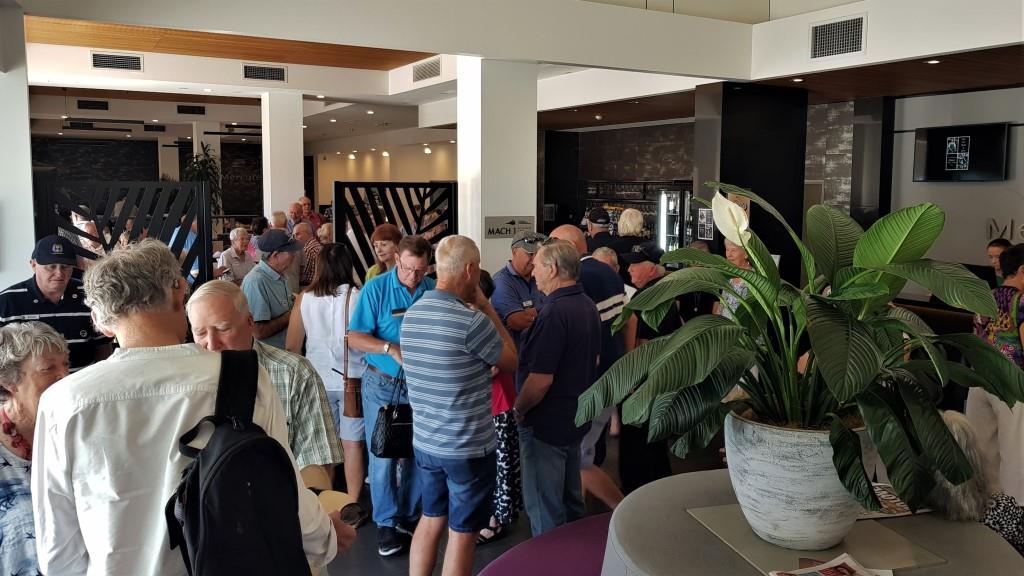
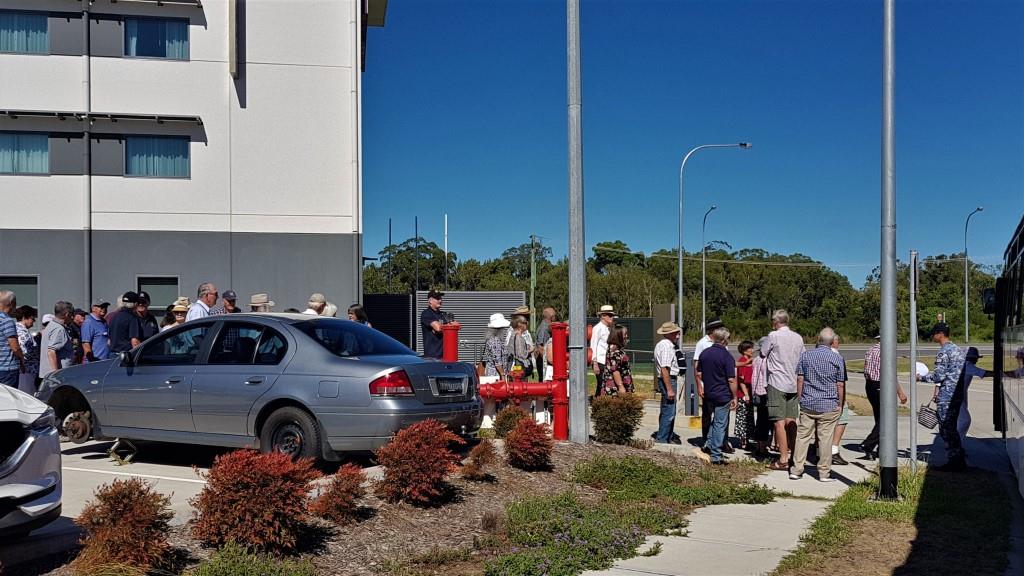
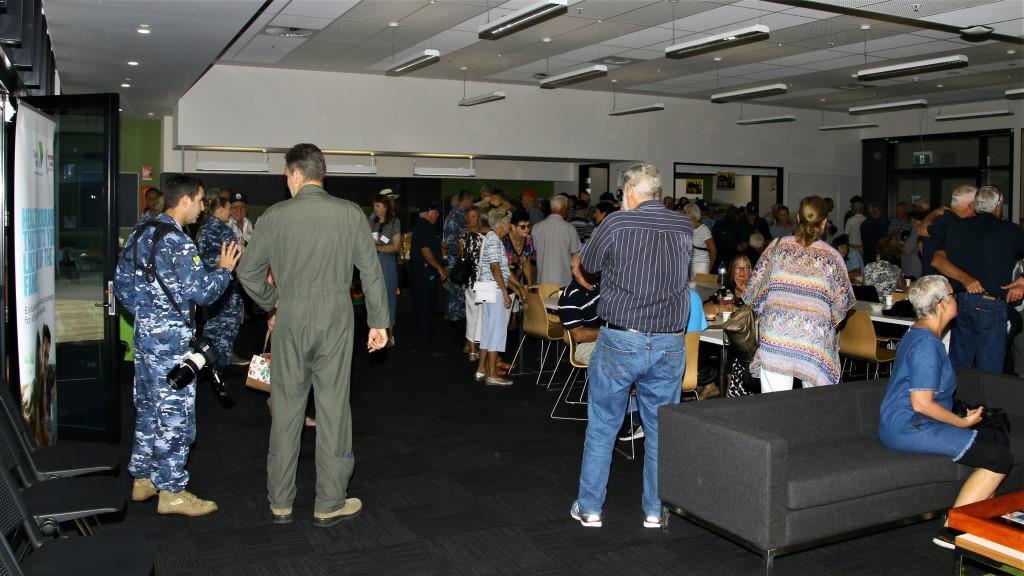
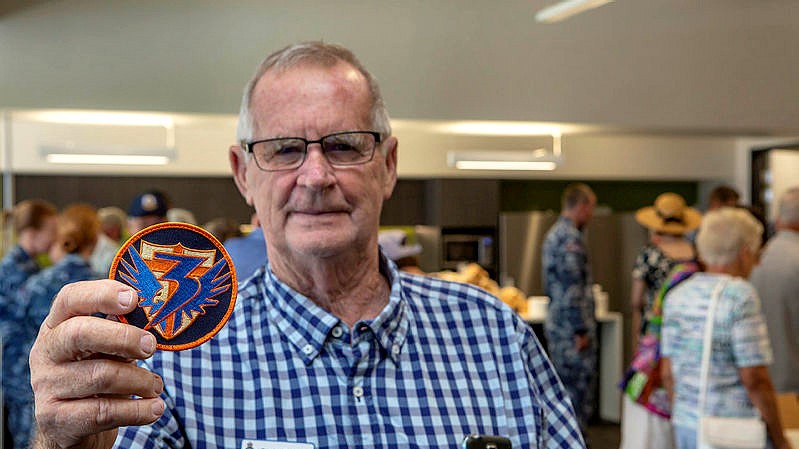
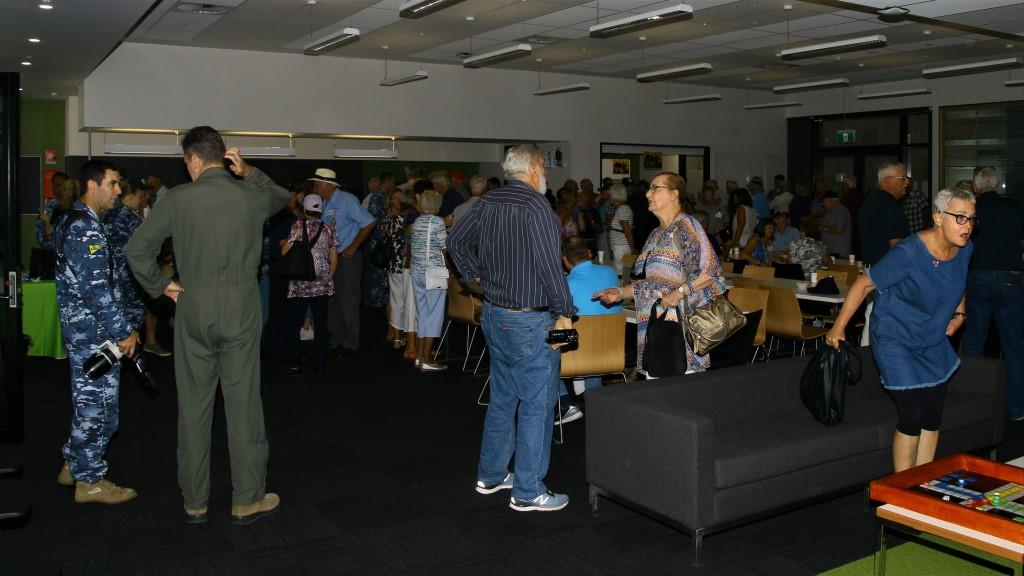
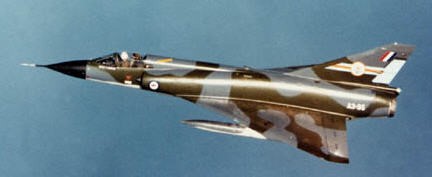
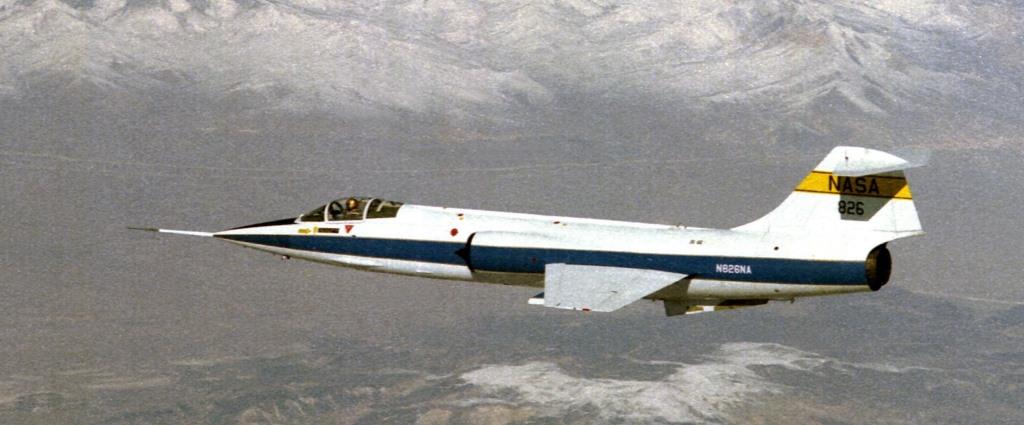
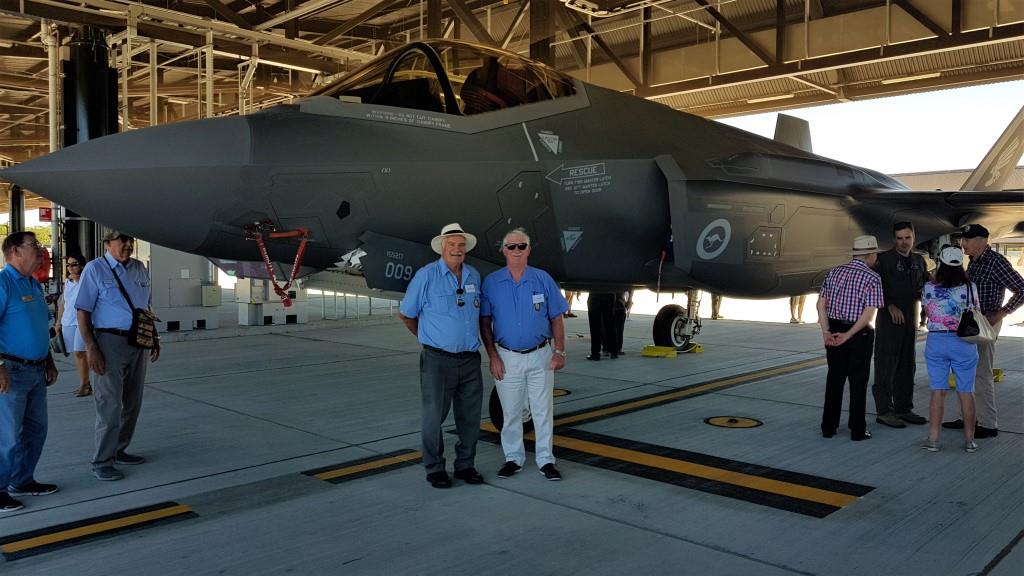
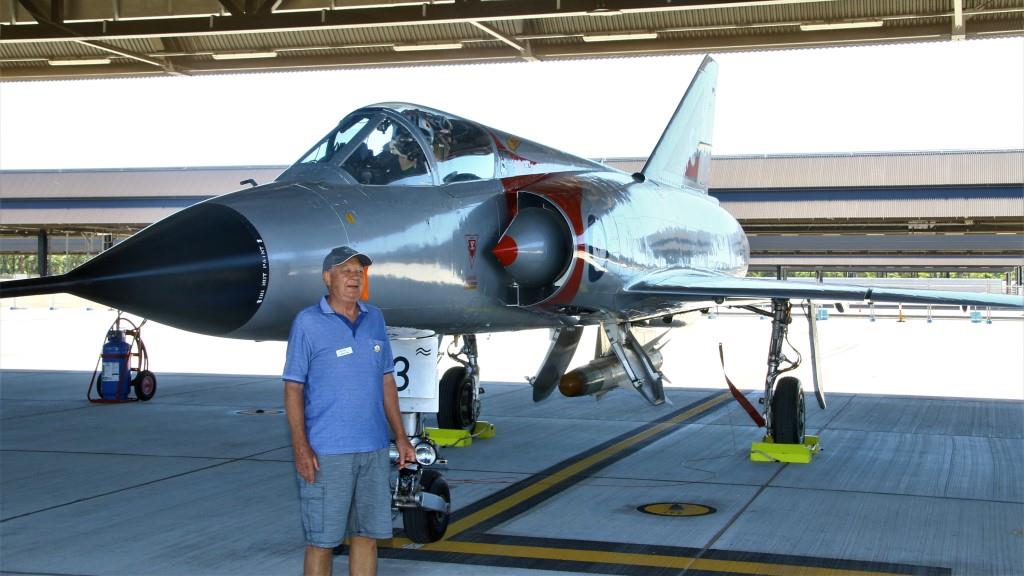
%20and%20pilot%20Dave%20Bowden.jpg)
